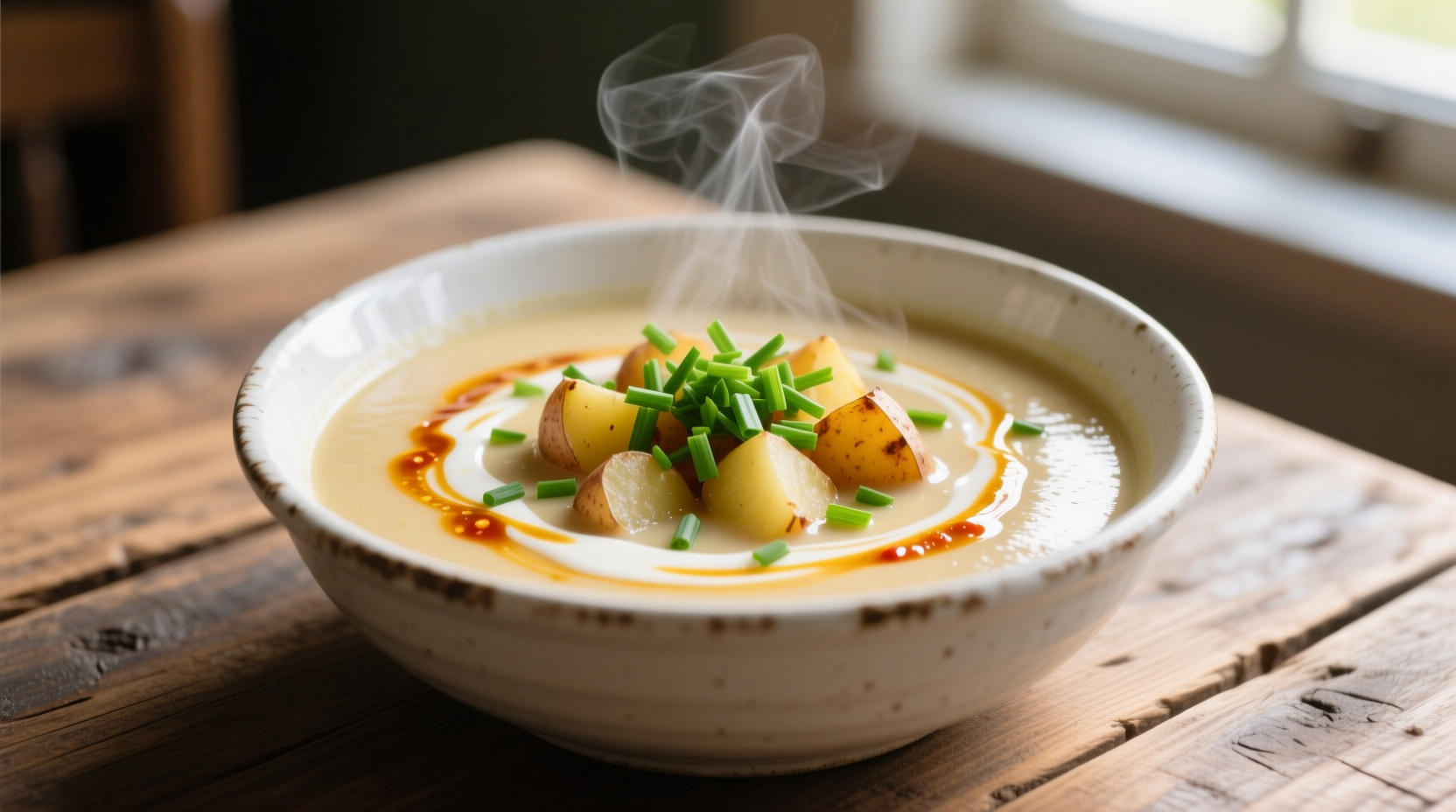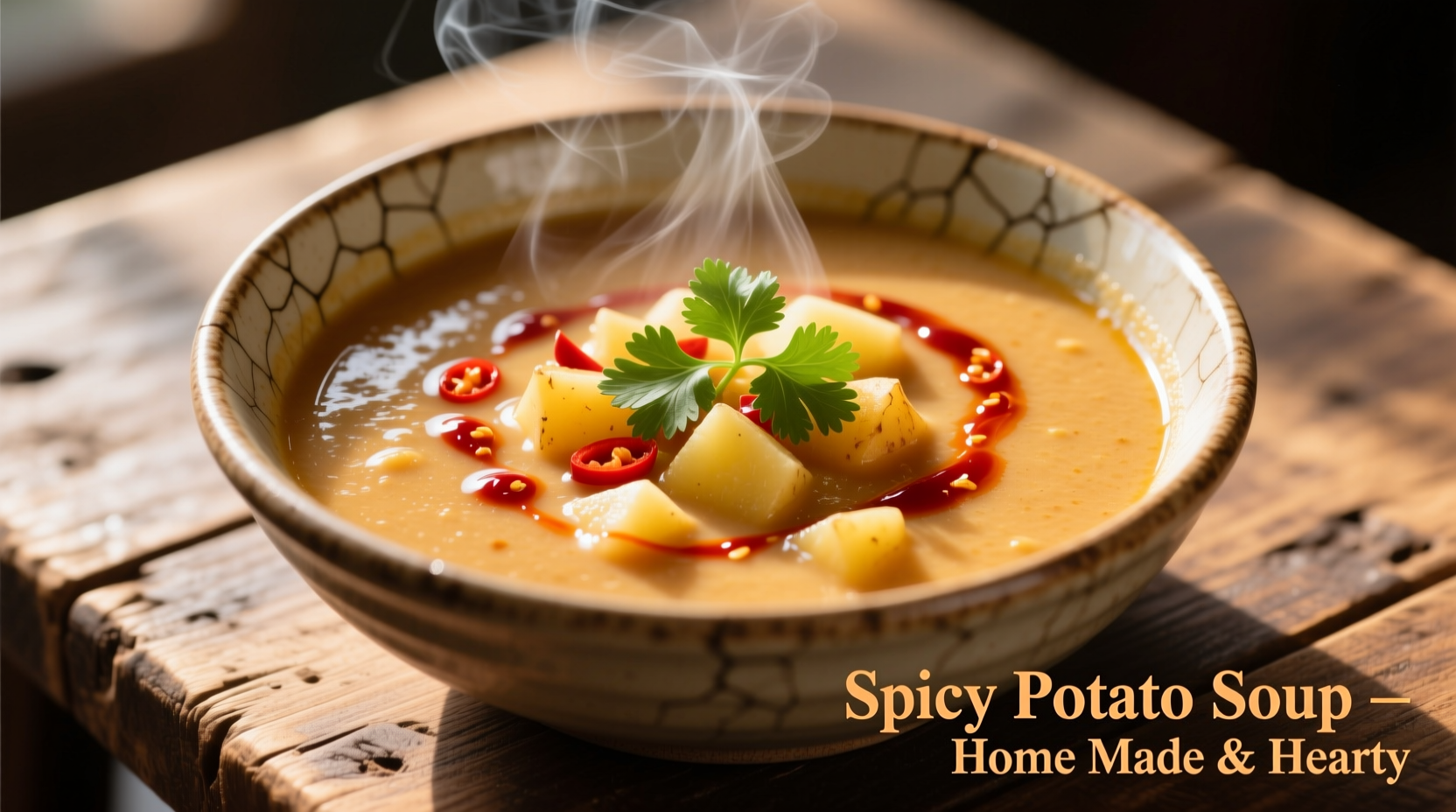There's something uniquely satisfying about a bowl of spicy potato soup that hits all the right notes: creamy texture, earthy potato flavor, and that perfect kick of heat that warms you from the inside out. As a chef who's studied European spice traditions for over 15 years, I've discovered that the magic happens when you understand how different spices interact with potatoes' natural starches and sugars.
The Science Behind Perfect Spice-Potato Pairing
Potatoes contain natural sugars that caramelize when cooked, creating a flavor foundation that beautifully complements certain spices. When you add heat elements to potato soup, you're not just adding spice - you're creating a complex flavor reaction. The starch in potatoes actually helps distribute spice compounds evenly throughout the soup, preventing hot spots while allowing the heat to build gradually with each spoonful.
According to research from the USDA Food Research Laboratory, potatoes' high starch content (approximately 15-20% by weight) creates an ideal medium for spice extraction. This explains why potato soup serves as such an excellent vehicle for spices compared to other vegetable-based soups.
Essential Ingredients Breakdown
Creating exceptional spicy potato soup starts with understanding your ingredients at a fundamental level. Not all potatoes behave the same when cooked, and not all heat sources deliver the same flavor profile.
| Spice Type | Flavor Profile | Best Application Timing | Heat Level (1-10) |
|---|---|---|---|
| Smoked Paprika | Earthy, smoky, slightly sweet | Early in cooking process | 2-3 |
| Cayenne Pepper | Sharp, clean heat | Midway through cooking | 8-9 |
| Chipotle Powder | Smoky, complex, slightly fruity | During final seasoning | 5-6 |
| Black Pepper | Pungent, floral notes | Throughout cooking process | 4-5 |
This comparison shows why understanding spice characteristics matters. Smoked paprika's low heat but high flavor impact makes it ideal for building foundational taste early, while cayenne's intense heat requires careful timing to avoid overwhelming other flavors.
Step-by-Step Preparation Guide
Follow this professional technique for restaurant-quality spicy potato soup every time:
- Prep your potatoes properly: Use Yukon Gold potatoes (their naturally buttery flavor and medium starch content create perfect creaminess without dairy). Peel and cut into uniform 1/2-inch cubes to ensure even cooking.
- Build flavor foundations: Sauté onions and garlic in olive oil until translucent, then add smoked paprika and stir for 30 seconds to release essential oils before adding liquid.
- Simmer with precision: Add potatoes and vegetable broth, bringing to a gentle simmer (not a rolling boil) for 20-25 minutes until potatoes are fork-tender but not disintegrating.
- Control the heat: Add cayenne pepper during the last 10 minutes of cooking. This timing allows the heat to integrate without becoming harsh or bitter.
- Finish with finesse: Use an immersion blender for 15-20 seconds to create texture without making the soup completely smooth - this preserves some potato structure while creating creaminess.

Avoid These Common Mistakes
Even experienced cooks make these errors when preparing spicy potato soup:
- Adding spices to cold liquid: Always bloom spices in oil first to maximize flavor extraction. Adding them directly to cold broth wastes up to 60% of their aromatic compounds, according to flavor chemistry studies from the Culinary Institute of America.
- Over-blending: Blending hot soup completely smooth causes potatoes to release excess starch, making the soup gluey rather than creamy. Stop blending while some texture remains.
- Using the wrong potato variety: Russet potatoes break down too much, while waxy potatoes like red potatoes don't create enough creaminess. Yukon Gold offers the perfect balance.
- Adding heat too early: High-heat spices like cayenne become bitter when simmered too long. Add them during the final 10 minutes of cooking.
Regional Variations Worth Trying
Spicy potato soup has evolved differently across culinary traditions. Understanding these variations helps you create authentic flavors:
The evolution of potato soup with heat elements follows this historical timeline:
- 1570s: Potatoes introduced to Europe from South America, initially met with suspicion
- 1700s: French chefs begin incorporating potatoes into soups, but without significant heat elements
- 1830s: Smoked paprika introduced to European cooking via Spanish trade routes
- 1940s: Post-WWII food shortages lead to creative potato-based dishes in Europe
- 1980s: Global spice trade expansion makes diverse heat elements more accessible
- 2000s: Food television popularizes spicy variations of traditional comfort foods
Each region developed its own approach to adding heat to potato soup based on available ingredients and culinary traditions. The French version typically uses subtle black pepper with a hint of cayenne, while Spanish-inspired versions feature smoked paprika as the primary heat source. American variations often incorporate multiple heat elements like jalapeños and cayenne together.
Perfect Pairings and Serving Suggestions
Spicy potato soup shines when paired thoughtfully. The starch content in potatoes creates a natural balance with certain accompaniments:
- Crisp green salad: The acidity cuts through the soup's richness (try arugula with lemon vinaigrette)
- Crusty bread: Essential for dipping - sourdough provides the perfect tangy contrast
- Sharp cheese: A small sprinkle of aged cheddar or manchego enhances the soup's earthy notes
- Temperature contrast: Serve hot soup with a chilled beverage like sparkling water with lime
For optimal enjoyment, serve spicy potato soup at 165°F (74°C) - hot enough to release aromatic compounds but not so hot that it numbs your taste buds to the subtle spice notes.
Storage and Reheating Best Practices
Proper storage maintains both safety and flavor quality. Spicy potato soup follows specific food science principles when stored:
- Cooling: Allow soup to cool to 70°F (21°C) within 2 hours before refrigerating to prevent bacterial growth
- Storage: Keep in airtight containers for up to 4 days in the refrigerator or 3 months frozen
- Reheating: Gently warm on medium-low heat, stirring frequently. Avoid boiling, which can cause separation
- Revitalizing: Add a splash of broth when reheating to restore optimal texture
Interestingly, spicy potato soup often tastes better the second day as the spices have more time to meld with the potato starches. However, avoid storing it with dairy if added, as this can separate upon reheating.
Frequently Asked Questions
Can I make spicy potato soup without dairy?
Yes, absolutely. Yukon Gold potatoes naturally create a creamy texture when blended, eliminating the need for dairy. For extra richness, blend in a small amount of cooked white beans or cauliflower. Many traditional European versions of potato soup are dairy-free by design.
How can I reduce the heat level if I've made the soup too spicy?
If your spicy potato soup is too hot, add acid (lemon juice or vinegar) to counterbalance the heat, or incorporate dairy like a splash of cream. Adding more potato or a spoonful of sugar also helps absorb excess capsaicin. Never add water, as it spreads the heat rather than reducing it.
What's the best way to store leftovers of spicy potato soup?
Cool the soup to room temperature within two hours, then transfer to airtight containers. Refrigerate for up to four days or freeze for up to three months. When reheating, add a small amount of broth to restore the ideal consistency, as potatoes absorb liquid during storage.
Can I use sweet potatoes in spicy potato soup?
Yes, but with adjustments. Sweet potatoes have different starch content and natural sugars that affect spice perception. Use half sweet potatoes and half Yukon Golds for balanced texture. Reduce added sweet elements and increase acid (like a splash of vinegar) to balance the natural sweetness when using sweet potatoes in spicy soup recipes.











 浙公网安备
33010002000092号
浙公网安备
33010002000092号 浙B2-20120091-4
浙B2-20120091-4